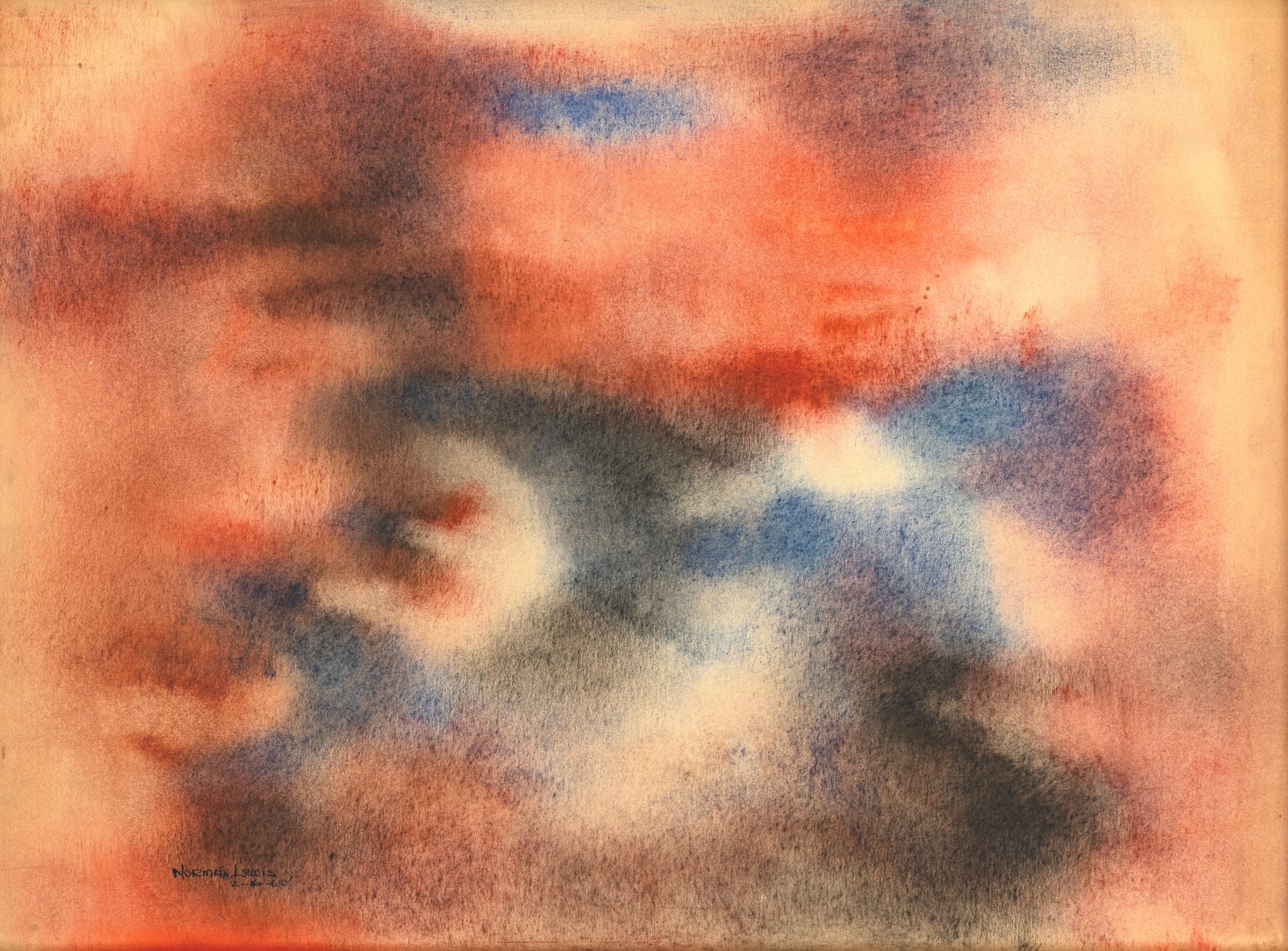Norman Lewis American, 1909-1979
49.5 x 64.8 cm
Norman Lewis received his artistic education in the midst of the Harlem Renaissance. “The younger painters like Jake [Lawrence], Romy [Bearden], myself, we did a lot of listening,” he later explained. [1] The listening he did – to the painters Charles Alston and Aaron Douglas, the sculptors Henry Bannarn and Augusta Savage—would contribute to Lewis’s art and activism in the next decades. His work for the WPA, alongside Adolph Gottlieb and Jackson Pollock, added to his development as an important voice of abstract expressionism at mid-century. His early work often engaged social realism, but by the mid-1940s, he moved decisively toward something more abstract.
By 1960 when the present work was executed, Lewis had moved away from overt politics in his work. Critics have nonetheless been unable to resist reading the works of this decade as metaphorical commentary on race, above Lewis’s frequent protests to the contrary. The tension between the formalism he espoused and the identity politics that were never far from his thoughts propelled Lewis to extraordinary innovations in abstract painting.
Ruth Fine observes that "a characteristic of many of these works is their softly rendered amorphous surfaces, which relate to stippling and rubbing techniques Lewis was using on paper, usually with no namable motifs.” [2] An undated typed sheet in Lewis’s sketchbook summarizes his transition: "Reduction of entire composition to a simple major form, to be carefully drawn within certain limits … Essentials – scheme of the composition.” [3]
This summarizes the transition from Lewis’s objective works of the 1940s to the summary evocations embodied in the present work. The forms are simplified to the point where the entire tale is told with color and touch, only minimally drawn. Lewis had become confident and forthright in the path of non-objectivity in art. His painting didn't include or omit his politics, but dug deeper:
"Art is to me the expression of unconscious experiences common to all men, which have been strained through the artist’s own peculiar associations and use of his medium. In this sense, it becomes an activity of discovery, emotional, intellectual, and technical, not only for the artist but those who view his work. Art is a language in itself, embodying purely visual symbols which cannot properly be translated into words, musical notes, or in the case of painting, three dimensional objects, and to attempt such is to be unable to admit the unique function of art or understand its language.” [4]
[1] Norman Lewis, quoted by Ann Eden Gibson, Norman Lewis: Black Paintings 1946-1977, 1998, p. 14
[2] Ruth Fine, Procession: The Art of Norman Lewis, 2016, p. 62
[3] As reproduced in Fine, p. 62
[4] Fine, p. 74
Provenance
The artist; toPrivate collection, New York; to
[Peg Alston Fine Art, New York, until 2019]; to
[Menconi + Schoelkopf Fine Art, New York, 2019-2020]; to
Private collection, 2020 until the present

